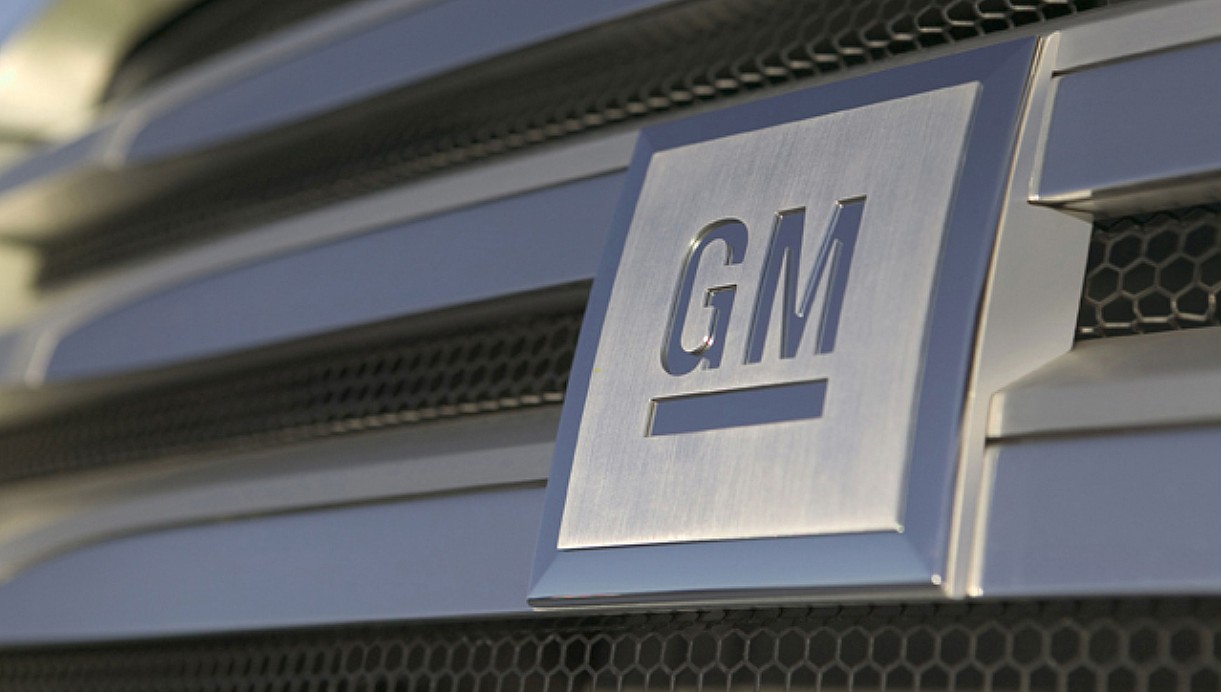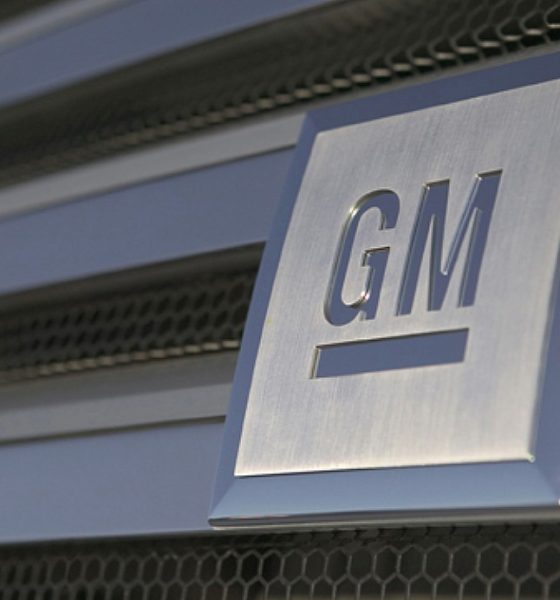

Investor's Corner
GM reports strong Q1 Earnings, prepares to navigate semiconductor shortage
General Motors (NYSE: GM) reported its Q1 2021 Earnings on Wednesday morning, showing a well-performing financial spreadsheet that was supported by the automaker’s ability to beat Wall Street’s expectations. GM is working on expanding its fleet of all-electric vehicles and has several models planned for release in the coming years, but it will first have to prepare to navigate through a global semiconductor shortage that has caused delays and closures across the automotive industry.
GM reported an adjusted Earnings per Share of $2.25, handily beating the $1.04 that Wall Street analysts estimated according to Refinitiv. Additionally, its Revenue figures fell just short of the analyst expectations. GM reported $32.47 billion, while Wall Street expected $32.67 billion. The company solidified its expectations for the rest of 2021, forecasting $10 billion to $11 billion, or $4.50 to $5.25 per share in adjusted pretax profits. Additionally, the company expects the adjusted free cash flow to be between $1 billion and $2 billion for the year. These expectations and predictions already had the global semiconductor chip shortage factored in and included an expected decrease in earnings of between $1.5 billion and $2 billion. GM also anticipates a decrease of between $1.5 billion and $2.5 billion in free cash flow.
Shares of GM were up 3.3%, trading at $57.19 at 10:54 EST.
“The speed and agility of our team are front and center as we move from managing through a pandemic to managing the global semiconductor shortage,” GM CEO Mary Barra said in a letter to shareholders. “This remains a challenging period for the company as we emerge from 2020, but the team continues to demonstrate its ability to manage complex situations.”
Despite the factored decreases in some financial statistics, Barra still expects a strong first half of 2021. The company expects about $5.5 billion in pretax and adjusted earnings, according to the shareholder letter.
“These strong results demonstrate once again the underlying strength of our business, especially in North America and China, and at GM Financial. We continue to execute our strategy and make significant progress on our transition to an all-electric future with the growth opportunities it creates,” Barra added.
GM is beginning to transition its product line to more electric cars while beginning a slow phase-out of gas-powered vehicles. The company has already committed to an all-electric lineup and a stoppage of gas-powered engine production in 2035. Barra’s letter to shareholders outlined the company’s “significant strides” that include:
- We are preparing to launch the redesigned Chevrolet Bolt EV and new Bolt EUV this summer, and we confirmed a high-volume battery-electric Silverado for both fleet and retail customers, with a GM-estimated 400 miles of range on a full charge for certain configurations.
- We unveiled the stunning production version of the Cadillac LYRIQ nine months earlier than planned because of our virtual engineering and software expertise.
- We unveiled a second GMC HUMMER EV model – the GMC HUMMER EV SUV – which will feature in-house developed, software-driven technologies, including CrabWalk, Extract Mode, and many more industry-leading features.
- We continue to expand the availability and capabilities of Super Cruise, the industry’s first true hands-free driver-assistance system.
- We introduced BrightDrop, a business created to help commercial delivery fleets maximize productivity, improve safety and reduce their carbon footprint. We are on track to begin delivering EV600 vans to our first customer, FedEx Express, later this year.
- We announced that Ultium Cells LLC, our joint venture with LG Energy Solution, will begin construction of a new battery cell plant in Spring Hill, Tennessee. It will open in 2023, a year after our Lordstown, Ohio cell plant.
- We signed a joint development agreement and increased our investment in SolidEnergy Systems, one of several companies we are working with to help commercialize lithium-metal batteries, which have incredible potential to deliver even better EV performance, more range, and lower costs for customers.
- We joined new investors Microsoft and Walmart in a $2.75-billion fundraising round for Cruise,
which also announced an agreement with Dubai to deploy up to 4,000 self-driving Cruise Origin
taxis by 2030. - We will build two large EVs for Honda using our Ultium technology – one SUV for the Honda
brand, and one for the Acura brand. - We revealed Ultium Charge 360, an innovative and holistic approach that integrates charging
networks with our mobile apps and other products and services to simplify the charging experience for our EV customers.
GM’s net income was $3 billion in Q1, a huge increase compared to the same quarter in 2020, where the automaker only reported a $294 million income. The large increase in income can be attributed to GM’s strategy to control the outbreak of the COVID-19 pandemic in Q1 2020, where some of the company’s factories were shuttered, CNBC said.

Investor's Corner
Tesla stock closes at all-time high on heels of Robotaxi progress

Tesla stock (NASDAQ: TSLA) closed at an all-time high on Tuesday, jumping over 3 percent during the day and finishing at $489.88.
The price beats the previous record close, which was $479.86.
Shares have had a crazy year, dipping more than 40 percent from the start of the year. The stock then started to recover once again around late April, when its price started to climb back up from the low $200 level.
This week, Tesla started to climb toward its highest levels ever, as it was revealed on Sunday that the company was testing driverless Robotaxis in Austin. The spike in value pushed the company’s valuation to $1.63 trillion.
Tesla Robotaxi goes driverless as Musk confirms Safety Monitor removal testing
It is the seventh-most valuable company on the market currently, trailing Nvidia, Apple, Alphabet (Google), Microsoft, Amazon, and Meta.
Shares closed up $14.57 today, up over 3 percent.
The stock has gone through a lot this year, as previously mentioned. Shares tumbled in Q1 due to CEO Elon Musk’s involvement with the Department of Government Efficiency (DOGE), which pulled his attention away from his companies and left a major overhang on their valuations.
However, things started to rebound halfway through the year, and as the government started to phase out the $7,500 tax credit, demand spiked as consumers tried to take advantage of it.
Q3 deliveries were the highest in company history, and Tesla responded to the loss of the tax credit with the launch of the Model 3 and Model Y Standard.
Additionally, analysts have announced high expectations this week for the company on Wall Street as Robotaxi continues to be the focus. With autonomy within Tesla’s sights, things are moving in the direction of Robotaxi being a major catalyst for growth on the Street in the coming year.
Elon Musk
Tesla needs to come through on this one Robotaxi metric, analyst says
“We think the key focus from here will be how fast Tesla can scale driverless operations (including if Tesla’s approach to software/hardware allows it to scale significantly faster than competitors, as the company has argued), and on profitability.”

Tesla needs to come through on this one Robotaxi metric, Mark Delaney of Goldman Sachs says.
Tesla is in the process of rolling out its Robotaxi platform to areas outside of Austin and the California Bay Area. It has plans to launch in five additional cities, including Houston, Dallas, Miami, Las Vegas, and Phoenix.
However, the company’s expansion is not what the focus needs to be, according to Delaney. It’s the speed of deployment.
The analyst said:
“We think the key focus from here will be how fast Tesla can scale driverless operations (including if Tesla’s approach to software/hardware allows it to scale significantly faster than competitors, as the company has argued), and on profitability.”
Profitability will come as the Robotaxi fleet expands. Making that money will be dependent on when Tesla can initiate rides in more areas, giving more customers access to the program.
There are some additional things that the company needs to make happen ahead of the major Robotaxi expansion, one of those things is launching driverless rides in Austin, the first city in which it launched the program.
This week, Tesla started testing driverless Robotaxi rides in Austin, as two different Model Y units were spotted with no occupants, a huge step in the company’s plans for the ride-sharing platform.
Tesla Robotaxi goes driverless as Musk confirms Safety Monitor removal testing
CEO Elon Musk has been hoping to remove Safety Monitors from Robotaxis in Austin for several months, first mentioning the plan to have them out by the end of 2025 in September. He confirmed on Sunday that Tesla had officially removed vehicle occupants and started testing truly unsupervised rides.
Although Safety Monitors in Austin have been sitting in the passenger’s seat, they have still had the ability to override things in case of an emergency. After all, the ultimate goal was safety and avoiding any accidents or injuries.
Goldman Sachs reiterated its ‘Neutral’ rating and its $400 price target. Delaney said, “Tesla is making progress with its autonomous technology,” and recent developments make it evident that this is true.
Investor's Corner
Tesla gets bold Robotaxi prediction from Wall Street firm
Last week, Andrew Percoco took over Tesla analysis for Morgan Stanley from Adam Jonas, who covered the stock for years. Percoco seems to be less optimistic and bullish on Tesla shares, while still being fair and balanced in his analysis.

Tesla (NASDAQ: TSLA) received a bold Robotaxi prediction from Morgan Stanley, which anticipates a dramatic increase in the size of the company’s autonomous ride-hailing suite in the coming years.
Last week, Andrew Percoco took over Tesla analysis for Morgan Stanley from Adam Jonas, who covered the stock for years. Percoco seems to be less optimistic and bullish on Tesla shares, while still being fair and balanced in his analysis.
Percoco dug into the Robotaxi fleet and its expansion in the coming years in his latest note, released on Tuesday. The firm expects Tesla to increase the Robotaxi fleet size to 1,000 vehicles in 2026. However, that’s small-scale compared to what they expect from Tesla in a decade.
Tesla expands Robotaxi app access once again, this time on a global scale
By 2035, Morgan Stanley believes there will be one million Robotaxis on the road across multiple cities, a major jump and a considerable fleet size. We assume this means the fleet of vehicles Tesla will operate internally, and not including passenger-owned vehicles that could be added through software updates.
He also listed three specific catalysts that investors should pay attention to, as these will represent the company being on track to achieve its Robotaxi dreams:
- Opening Robotaxi to the public without a Safety Monitor. Timing is unclear, but it appears that Tesla is getting closer by the day.
- Improvement in safety metrics without the Safety Monitor. Tesla’s ability to improve its safety metrics as it scales miles driven without the Safety Monitor is imperative as it looks to scale in new states and cities in 2026.
- Cybercab start of production, targeted for April 2026. Tesla’s Cybercab is a purpose-built vehicle (no steering wheel or pedals, only two seats) that is expected to be produced through its state-of-the-art unboxed manufacturing process, offering further cost reductions and thus accelerating adoption over time.
Robotaxi stands to be one of Tesla’s most significant revenue contributors, especially as the company plans to continue expanding its ride-hailing service across the world in the coming years.
Its current deployment strategy is controlled and conservative to avoid any drastic and potentially program-ruining incidents.
So far, the program, which is active in Austin and the California Bay Area, has been widely successful.








